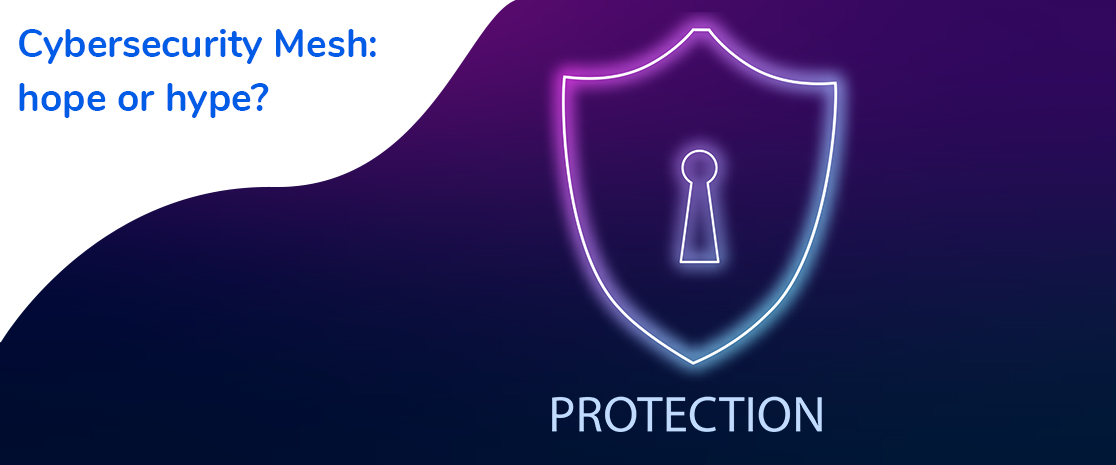Cybersecurity Mesh: hope or hype?
In the face of ever-increasing demands from technology and the demands of ever-more-constrained data centers, many organizations look to standardized solutions to ensure security, privacy, and reliability in their data centers.
In the face of ever-increasing demands from technology and the demands of ever-more-constrained data centers, many organizations look to standardized solutions to ensure security, privacy, and reliability in their data centers.
This article reviews the pros and cons of using an Internet security mesh network to protect data centers, both as stand-alone and part of a more extensive data center network. It also reviews the benefits, risks, and opportunities of using an Internet security mesh network as part of a data center network.
What is an Internet Security Mesh Network?
An Internet security mesh network is a decentralized, Internet-based infrastructure that allows organizations to connect securely and manageably with customers and service providers. It provides connectivity between edge computing devices and data centers and between edge computing devices and edge storage. It is implemented as an infrastructure that acts as a single location network (SLL), where all devices are region-agnostic and have access to the internet.
In the internet age, organizations turn to infrastructure at their convenience. An IoT security mesh network can be an adequate safety net for organizations trying to avoid accessing sensitive customer data. A data center network that uses an IoT security mesh could be used to secure data stored in a customer data center or sent directly to a data center. These networks provide the right level of security at the right time, and the right place, allowing organizations to focus on running the business as usual.
Benefits of Internet Security Mesh Network
Many organizations are motivated by the same goals as those behind other large digital networks—i.e., they want to provide seamless, secure experiences. By providing an infrastructure that acts as a single location network (SLL), an Internet security mesh network solves this issue of accessing sensitive customer data. There's no need to carry multiple computers, separate networks, and an entire IT operating system. There are no network links, interfaces, or applications required. The IoT security mesh can be set up in a warehouse or field location.
This single-location network also allows organizations to securely manage their data and ensure data center operations are reflected in the customer experience.
This network has various benefits, including strong authentication and access management policies. Data centers rely on strong authentication to access and manage data, although this also becomes critical when managing access to essential business functions.
Risks of Internet Security Mesh Network
Several threats can limit an organization's ability to implement an Internet security mesh network. These threats are, in many cases, due to the need to design an IoT security mesh network to meet specific requirements. For example, an IoT security mesh network could be used to manage secure access and manage access control. While these issues can be solved through an organization's design, it's important to remember that these risks are not unique to the Internet security network. They are common in all data center designs and are accurate in the data center network itself.
Masking authentication in IoT Mesh Network
The standardization of authentication and Key Management in IoT systems has led to authentication tokens and authentication policies in IoT systems. This allows organizations to centralize access control, enable remote monitoring, and provide more granular control. However, this also places significant pressure on organizations to retrofit their IoT systems to support these capabilities.
An example of this pressure is the growing trend towards "root access"—that is, an organization's chief information security officer (CISO) can grant access to users only with the necessary credentials. While this could be a problem in an enterprise setting, it's a problem that can quickly happen using an IoT security mesh. To solve this issue, an organization could: Set up an authentication workflow that includes a user's primary entry point and a centralized management system. This centralized management system could manage user authentication and access control, providing a single source of truth for authentication results.



Comments (49)
123456
9/20/2023 12:41:06 PM${@var_dump(md5(298104239))};
9/20/2023 12:41:10 PM123456
9/20/2023 12:41:18 PM123456
9/20/2023 12:41:28 PM123456
9/20/2023 12:41:36 PM123456
9/20/2023 12:41:46 PM123456
9/20/2023 12:41:49 PM123456 expr 944961423 + 840160180
9/20/2023 12:41:58 PM123456
9/20/2023 12:42:03 PM123456
9/20/2023 12:42:23 PM123456
9/20/2023 12:42:30 PM123456
9/20/2023 12:43:11 PM123456
9/20/2023 12:43:30 PM123456
9/20/2023 12:43:50 PM123456
9/20/2023 12:43:51 PMconvert(int,sys.fn_sqlvarbasetostr(HashBytes('MD5','1863903664')))
9/20/2023 12:44:18 PM123456
9/20/2023 12:44:28 PM123456
9/20/2023 12:44:38 PM123456
9/20/2023 12:45:16 PM123456
9/20/2023 12:45:29 PM123456
9/20/2023 12:45:36 PM123456
9/20/2023 12:49:52 PM123456
9/20/2023 12:49:56 PM123456
9/20/2023 12:50:20 PM123456
1/13/2024 9:51:58 PM123456
1/13/2024 9:52:13 PM123456
1/13/2024 9:52:30 PM123456
1/13/2024 9:52:31 PM123456
1/13/2024 9:52:48 PM123456 expr 985650164 + 889061052
1/13/2024 9:52:55 PM123456
1/13/2024 9:52:55 PM123456
1/13/2024 9:53:01 PM123456'and/**/extractvalue(1,concat(char(126),md5(1819201050)))and'
1/13/2024 9:53:15 PM'-var_dump(md5(201841949))-'
1/13/2024 9:53:28 PM123456
1/13/2024 9:53:47 PM123456
1/13/2024 9:54:10 PM123456
1/13/2024 9:54:34 PM123456
1/13/2024 9:54:41 PM123456
1/13/2024 9:55:08 PM${909117109+893623274}
1/13/2024 9:55:14 PM<%- 856069104+869913027 %>
1/13/2024 9:55:30 PM123456
1/13/2024 9:57:44 PM123456
1/13/2024 9:58:06 PM123456/**/and(select+1/**/from/**/pg_sleep(3))>0/**/
1/13/2024 10:00:29 PM123456'/**/and(select'1'from/**/pg_sleep(0))::text>'0
1/13/2024 10:00:32 PM123456'/**/and(select'1'from/**/pg_sleep(3))::text>'0
1/13/2024 10:00:39 PM123456
1/13/2024 10:01:52 PM123456
1/13/2024 10:02:57 PM123456
1/13/2024 10:04:10 PM